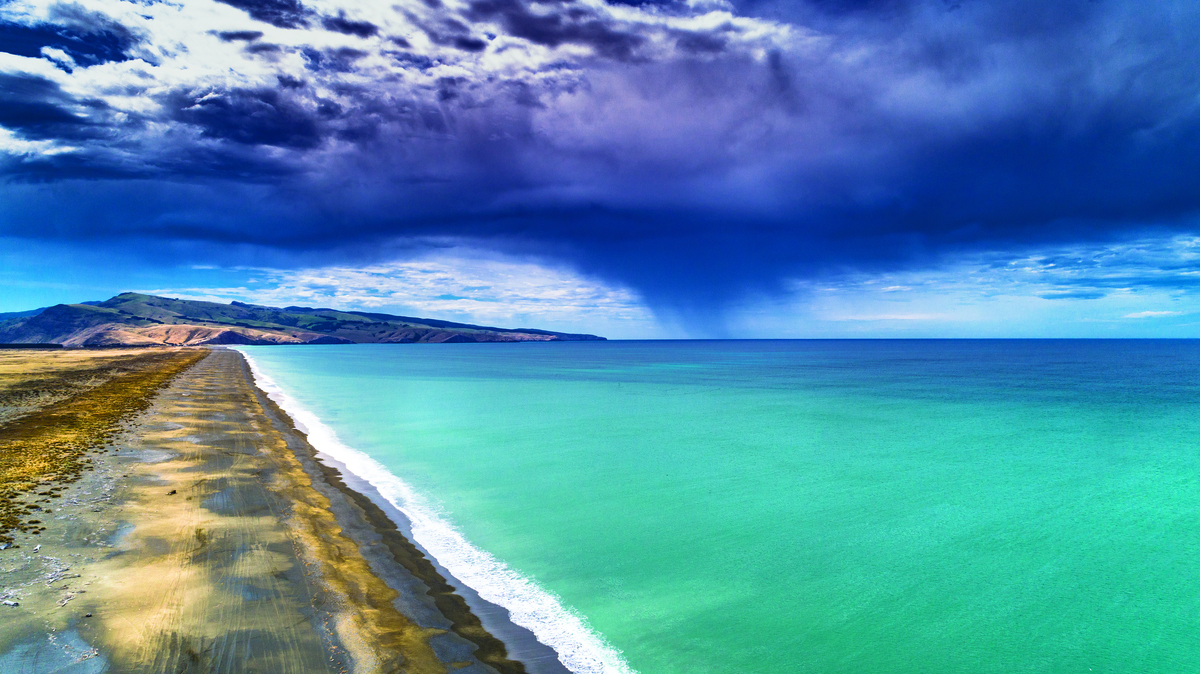National plans to go big on aerospace - without spending anything?
The National Party today pledged to appoint a minister of space and greenlight development of two additional aerospace facilities if it forms the next Government following the October 14 election.
“High-tech, high skills sectors such as aerospace offer an incredible opportunity to lift wages and help grow the economy,” National leader Christopher Luxon said at an event hosted by Rocket Lab today.
“However, New Zealand faces the real risk of losing its hard-won competitive advantages in aerospace due to excessive bureaucracy and increasing competition from other countries, including Australia,” he added.

National has plans to allocate two aerospace testing zones in addition to the Tāwhaki aerospace facility on the Kaitōrete Spit
Aerospace sector leaders have been warning that New Zealand’s regulatory settings have become outdated, making it more attractive to trial experimental aircraft, like drones and vertical take-off and landing (VTOL) craft, in other countries.
National’s Unleashing New Horizons policy seems to be a direct response to that, with Luxon pointing to the economic benefits the commercial aerospace generates - “12,000 people and contributes $1.7 billion to the economy”.
It follows the Government’s announcement of $5.4 million in funding to support the laying of a one-kilometer sealed runway at the Tāwhaki aerospace facility on the Kaitōrete Spit near Christchurch.
“Space also has the potential to drive greater interest in science and technology among school students and help reverse the slide in New Zealand’s education outcomes,” Luxon added as he announced an annual Prime Minister’s Space Prize for a top student in aerospace-related subjects.
To answer the aerospace industry’s criticisms around regulation National said its new minister of space would:
- Streamline rules, including replacing Ministerial approval of individual launches with launch criteria.
- Set Key Performance Indicators for regulators with independent monitoring to ensure space and advanced aviation companies receive timely and consistent decisions.
- Ringfence funding for the New Zealand Space Agency and aerospace functions within the Civil Aviation Authority to secure funding for regulatory functions within existing appropriations.
Luxon didn’t say where the two additional aerospace testing zones would be based, only that they would be exempted from usual compliance regimes, that provide reliable access to testing for space and advanced aviation without risking conflicts with other traffic”. National would invite landowners to bid to have their land declared a dedicated aerospace testing zone in legislation.
A move to improve procurement of satellite data services across government is also on the cards.
“Currently, agencies are not coordinating their procurement of satellite data. One department might buy satellite images from a provider only for another department to purchase the same information. This lack of coordination wastes taxpayers’ money,” the policy document notes.
The aerospace policies would be funded “from within existing baselines”.
“Property owners will apply to have their land permanently designated as a testing zone, meaning the Crown will not purchase land,” National said.
Unleashing New Horizons policy pledges include:
- Appoint a Minister for Space to promote space and advanced aviation in New Zealand and improve the performance of regulators
- Establish an annual Prime Minister’s Space Prize for the top school student in aerospace-related subjects to help boost interest in Science, Technology, Engineering and Maths education
- Welcome highly-skilled migrants to work in aerospace with fast-track visas including a pathway to residency
- Establish two dedicated testing zones for space and aerospace, in addition to the site at Kaitorete near Christchurch
- Improve satellite data procurement and sharing between government agencies so we’re not wasting taxpayers’ money by paying for the same sets of satellite images more than once.
